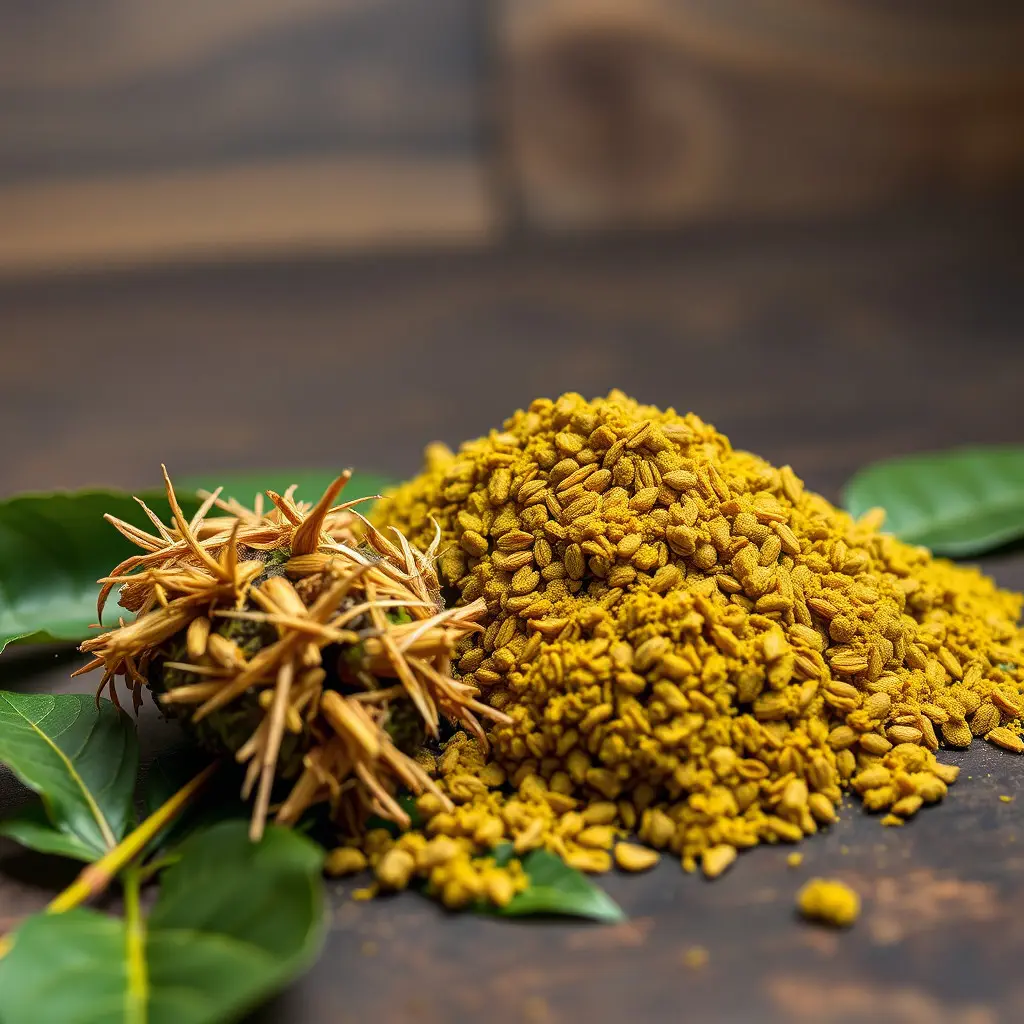Indiana's interest in kratom as an alternative remedy for chronic pain is growing, with users experiencing a mix of relief and inconsistent effects from the Mitragyna speciosa derivative. Its analgesic properties are linked to its alkaloids interacting with opioid receptors. While kratom's status in Indiana is currently undefined under state law, allowing for its sale and purchase with local restrictions, consumers are advised to approach it with caution due to potential health implications and the need for responsible use. The Indiana State Department of Health encourages careful consideration of dosage, as different strains can have varied impacts. As of early 2023, a starting dose of 1-5 grams is recommended for adults, with adjustments made based on individual tolerance. However, users should consult healthcare professionals for personalized advice and stay updated on the legal landscape, which influences kratom's accessibility and usage within the state. The ongoing exploration of kratom in Indiana contributes valuable insights to the broader conversation on its role in pain management, highlighting the importance of responsible use, informed decision-making, and continued research. (SEO Keywords: Indiana kratom)
Chronic pain affects millions, often leading individuals in Indiana and across the nation to explore various management options. Among these alternatives, kratom has emerged as a significant point of interest due to its reported pain-relieving properties. This article delves into the multifaceted role of kratom in managing chronic pain, offering a comprehensive look at its usage from the perspectives of Indiana users and experts. We will navigate the complex legal landscape surrounding kratom in the Hoosier State, shed light on regulations impacting accessibility, and provide crucial guidance for those considering kratom as part of their chronic pain management strategy. Join us as we explore this emerging field and its implications for Indiana residents.
- Understanding Kratom's Role in Chronic Pain Management: Insights from Indiana Users and Experts
- The Legal Landscape of Kratom in Indiana: Regulations, Accessibility, and Consumer Considerations
- Navigating Kratom Dosage for Chronic Pain Relief: A Guide for Indiana Residents
Understanding Kratom's Role in Chronic Pain Management: Insights from Indiana Users and Experts

In recent years, kratom has emerged as a topic of interest among individuals seeking alternatives for chronic pain management. Users in Indiana have reported varied experiences with this Mitragyna speciosa derivative, providing valuable insights into its efficacy and potential role in pain alleviation. The use of kratom in Indiana is not without scrutiny, as both proponents and critics weigh in on its benefits and risks. Locals who have incorporated kratom into their daily routines describe its analgesic properties as a double-edged sword; while it offers relief from persistent pain, it also comes with a spectrum of effects that can vary significantly from one individual to another. The alkaloids present in kratom leaves are believed to interact with opioid receptors in the brain, which may account for its analgesic impact. However, the nuanced experiences of Indiana users underscore the need for further research and understanding of kratom’s complex effects.
Experts in the field, including healthcare providers and researchers within Indiana institutions, are actively engaged in studying kratom’s role in chronic pain management. Their findings contribute to a growing body of knowledge that seeks to clarify how this plant-based compound can be effectively integrated into pain management strategies. These experts emphasize the importance of considering individual differences, dosage, and the potential for interactions with other medications when using kratom. They also highlight the need for regulatory frameworks that ensure the safety and quality of kratom products available to consumers. As the dialogue around kratom continues to evolve, Indiana’s role in this discourse is becoming increasingly significant, offering a real-world perspective that can inform both policy decisions and personal health choices.
The Legal Landscape of Kratom in Indiana: Regulations, Accessibility, and Consumer Considerations

In Indiana, the legal status of kratom has been a subject of debate and regulation. As of the knowledge cutoff in 2023, kratom is not explicitly scheduled as a controlled substance under the Indiana Controlled Substances Act, which means it is legally available to consumers. However, local ordinances may vary, with some cities imposing their own restrictions. Indiana residents interested in purchasing kratom must be aware of these municipal regulations to ensure compliance with local laws. The Indiana State Department of Health provides guidelines and updates on the status of kratom, emphasizing the importance of consumer awareness due to the product’s potential health effects. Accessibility to kratom in Indiana is relatively straightforward, with many vendors selling it both online and in physical stores, yet consumers are encouraged to approach its use responsibly. The Indiana kratom market caters to a diverse range of individuals seeking alternative pain management solutions, but it is crucial for users to stay informed about any changes in the legal landscape that could affect their access to these products. Regulations surrounding kratom in Indiana are subject to change, and consumers must remain vigilant and educated on the evolving laws to navigate this market safely and legally. It is advisable for individuals considering kratom as a part of their pain management strategy to consult with healthcare providers and to keep abreast of legal developments affecting its availability within the state.
Navigating Kratom Dosage for Chronic Pain Relief: A Guide for Indiana Residents

For Indiana residents seeking natural alternatives for chronic pain relief, kratom has emerged as a notable option. However, navigating the appropriate dosage is crucial for safe and effective use. Kratom, derived from the leaves of the Mitragyna speciosa tree, interacts with the opioid receptors in the brain to alleviate pain. As with any medication or supplement, finding the right dosage is key to achieving desired outcomes without risking adverse effects. Indiana’s kratom users should approach dosage with caution, as individual responses to kratom can vary significantly.
The recommended starting point for adults in Indiana considering kratom for pain management is a low dose of around 1-5 grams, which can be incrementally increased based on personal tolerance and pain levels. It’s important to monitor one’s response to the substance, as some strains may have different effects. The dosage may range up to 10-15 grams for experienced users, but it’s essential to adhere to individual sensitivities and consult with a healthcare provider before adjusting dosages. Additionally, Indiana residents should be aware of the legal status of kratom in their state, as regulations can influence how kratom is accessed and used. Always prioritize safety and legality when exploring kratom for chronic pain relief.
In conclusion, the role of kratom in chronic pain management has been a subject of considerable interest and debate among Indiana users and experts. As discussed, kratom’s potential as an alternative pain relief option offers hope to many. However, it is imperative for individuals to navigate its use with caution, adhering to the legal landscape and understanding the nuances of appropriate dosage. Indiana residents considering kratom for pain management should be well-informed about the local regulations and accessibility of the substance, as outlined in this article. It is through such informed discourse and responsible usage that users can make prudent decisions regarding their health and the benefits kratom may provide. The insights shared by Indiana’s community and experts underscore the importance of a balanced approach to evaluating kratom within the context of chronic pain management.






